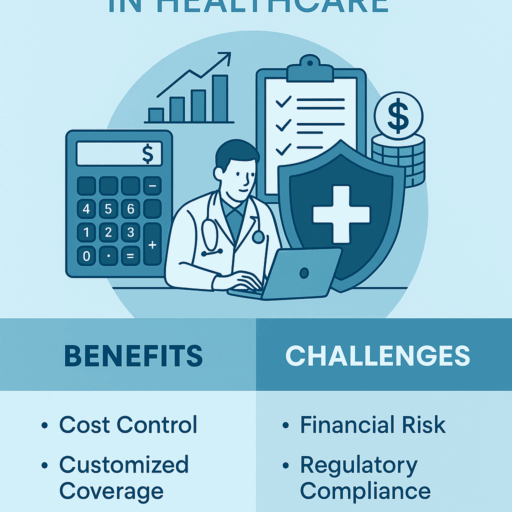Table of Contents
- 1 Key Takeaways
- 2 Table of Contents
- 3 Introduction to Accelerated TMS
- 4 How Accelerated TMS Works
- 5 Advantages Over Traditional Treatments
- 6 Scientific Support for TMS Effectiveness
- 7 Potential Side Effects and Considerations
- 8 A Day in the Life of a TMS Patient
- 9 Comparing TMS and Other Novel Therapies
- 10 Looking to the Future of Depression Treatment
Key Takeaways
- Accelerated Transcranial Magnetic Stimulation (TMS) presents an innovative and promising approach to treating depression.
- TMS allows for quicker therapeutic effects, improving patient outcomes and reducing depressive episodes.
- The integration of TMS into mental health strategies represents a significant advancement for those unresponsive to traditional antidepressants.

Table of Contents
- Introduction to Accelerated TMS
- How Accelerated TMS Works
- Advantages Over Traditional Treatments
- Scientific Support for TMS Effectiveness
- Potential Side Effects and Considerations
- A Day in the Life of a TMS Patient
- Comparing TMS and Other Novel Therapies
- Looking to the Future of Depression Treatment
Introduction to Accelerated TMS
Depression continues to be a significant health issue, affecting approximately 264 million people worldwide, according to the World Health Organization. While antidepressant medications provide relief for some, the side effects often deter adherence, and results can take weeks or months to manifest. Accelerated TMS offers an innovative alternative that is increasingly gaining traction. By bypassing the systemic route that traditional medications take, Transcranial Magnetic Stimulation (TMS) harnesses the power of magnetic fields to target specific brain areas directly associated with mood regulation, providing faster relief without the common side effects associated with oral medications.
Introducing accelerated TMS highlights an evolution in mental health treatment methods and emphasizes a patient-centric approach where individuals can achieve better outcomes more rapidly. As such, accelerated TMS shines as an advanced tool that holds the potential to change the landscape of depression treatments, particularly for those who have not experienced success with conventional therapies.
How Accelerated TMS Works
TMS utilizes high-powered magnetic pulses that modulate the electrical activity of the brain’s neural circuits. These pulses are targeted to stimulate regions involved in mood regulation, such as the prefrontal cortex, which has been implicated in depression. Resetting these neural pathways helps correct imbalances that exacerbate depressive symptoms. Importantly, this stimulation can lead to noticeable improvements after a brief period, often within weeks, cutting down the extended waiting time associated with traditional antidepressants. Some treatment protocols, such as accelerated TMS: long-lasting depression relief, are being studied for their potential to deliver results even more quickly while maintaining sustained therapeutic effects.
This direct mechanism is what makes TMS so promising. It is akin to rewiring a troubled circuit board, providing relief in a fraction of the time compared to medication therapy alone. Understanding the functionality behind TMS lays the foundation for appreciating its role as a vital modality in modern mental health practice.
Advantages Over Traditional Treatments
The advantages of TMS over traditional treatments are manifold. Conventional antidepressants interact with the body systemically, leading to side effects such as weight gain, sexual dysfunction, and emotional blunting—issues that often result in poor compliance and relapse. TMS differs in that it targets only the specific brain areas that are dysfunctional in depression, reducing the potential for widespread side effects and allowing for more consistent treatment adherence.
Additionally, while antidepressants often necessitate a trial-and-error approach to identify effective medication combinations, TMS’s rapid mechanism provides a more straightforward and expedient path to relief. Patients frequently express relief at the reduced burden of managing multiple medication side effects alongside their mental health challenges.
Scientific Support for TMS Effectiveness
Research supports the efficacy and safety of accelerated TMS. For example, an in-depth report by the National Institute of Mental Health found that TMS can significantly alleviate depressive symptoms in individuals who have not benefited from antidepressants alone. This effectiveness is particularly noted within a two-to-four-week time frame, showcasing TMS’s promise to deliver substantial improvements quickly.
TMS has been repeatedly tested in clinical trials, demonstrating immediate benefits and long-lasting effects when maintenance sessions are included. This comprehensive evidence base provides compelling support for the integration of TMS into established treatment regimens for depression.
Potential Side Effects and Considerations
While TMS is widely considered safe, being aware of potential side effects is necessary for informed consent and optimal patient care. Some individuals may experience mild, transient side effects such as headaches or tingling sensations at the stimulation site. Importantly, these are typically short-lived and subside shortly after sessions conclude, distinguishing TMS from the persistent adverse effects often seen with pharmacotherapy.
Before commencing TMS, a thorough medical evaluation is essential to ensure it’s appropriate for the individual’s therapeutic needs. Practitioners must consider personal medical history, the severity of symptoms, and previous treatment responses to tailor the TMS approach accordingly, ensuring its potential is fully realized.
A Day in the Life of a TMS Patient
Receiving treatment is convenient and straightforward for a TMS patient. Sessions are short, usually between 20 and 30 minutes, and the noninvasive nature of TMS means no anesthesia is required. Patients can resume daily activities immediately post-session, making integrating treatment into a busy lifestyle easy without significant time disruption.
The familiar routine and minimal disruption parallel routine healthcare visits, such as dental check-ups, emphasizing TMS as a vital component of regular self-care rather than an overwhelming medical intervention. Patient feedback highlights the treatment’s convenience and comfort, increasing satisfaction rates.
Comparing TMS and Other Novel Therapies
Compared to other novel therapies, TMS’s noninvasive characteristic is a significant factor setting it apart, for example, from Electroconvulsive Therapy (ECT), which requires anesthesia and is often associated with temporary memory loss. TMS offers a less disruptive option while maintaining an effective outcome profile for patients, presenting itself as a first-line option for those seeking alternatives to more invasive procedures.
While each treatment has its place within the psychiatric landscape, personalizing therapy choice to fit individual needs and symptoms ensures the most beneficial outcomes. The decision between TMS and other therapies benefits greatly from patient-practitioner dialogue focusing on personal preferences and treatment objectives.
Looking to the Future of Depression Treatment
The introduction of advanced neuromodulation therapies like TMS sets a new standard for the treatment of depression. Innovations in TMS technology, including precise targeting and refined delivery mechanisms, have the potential to further improve treatment efficacy and accessibility, especially in diverse populations with varying access to mental health resources.
Looking to the future, it is evident that TMS will likely play a pivotal role in reshaping how depression is treated. As more data emerge, healthcare systems globally stand poised to benefit from these insights, ushering in an era where mental health care is more responsive, personalized, and effective. For those battling the challenges of depression, innovations like TMS present a hopeful path to brighter, healthier days.

